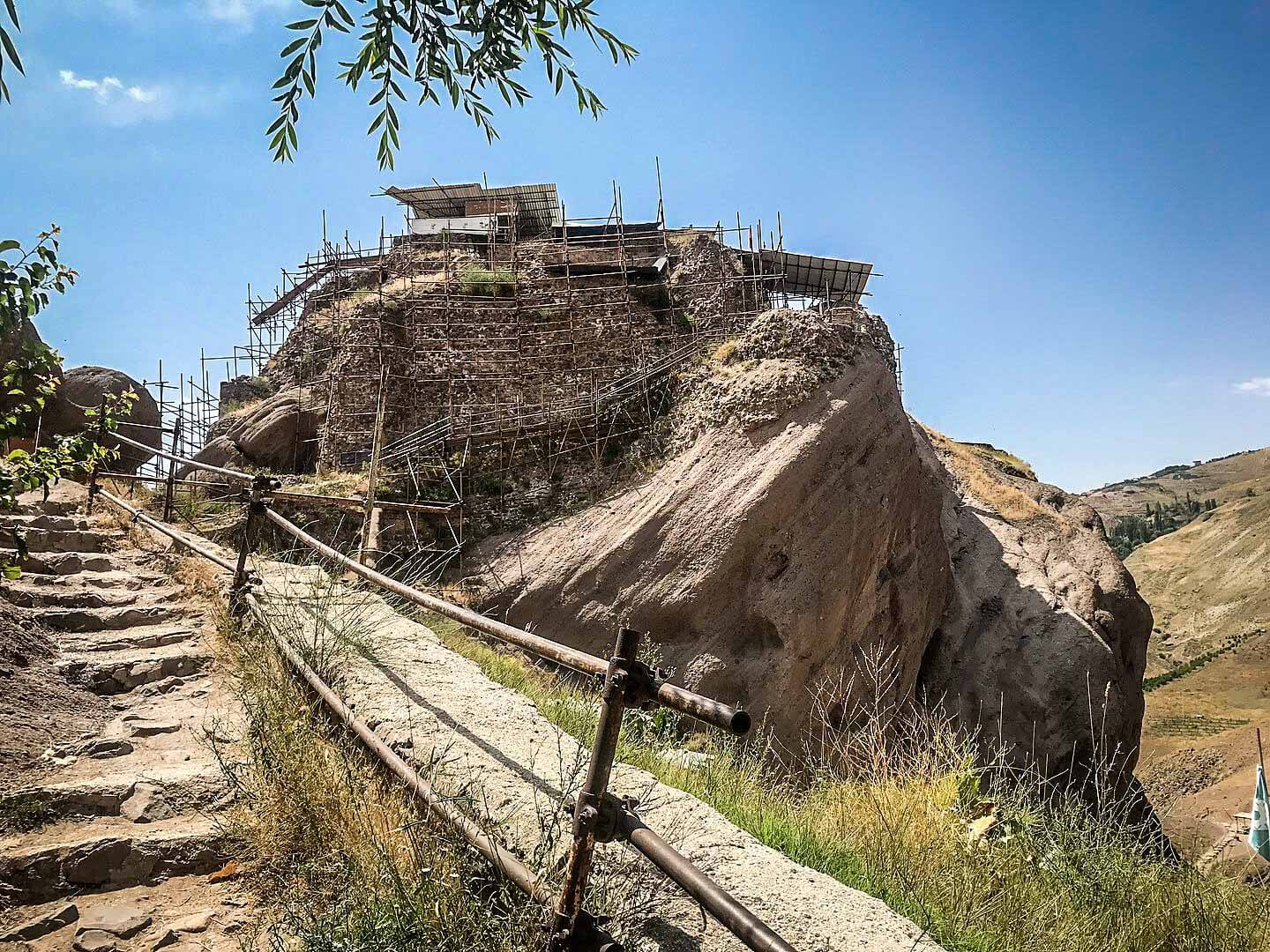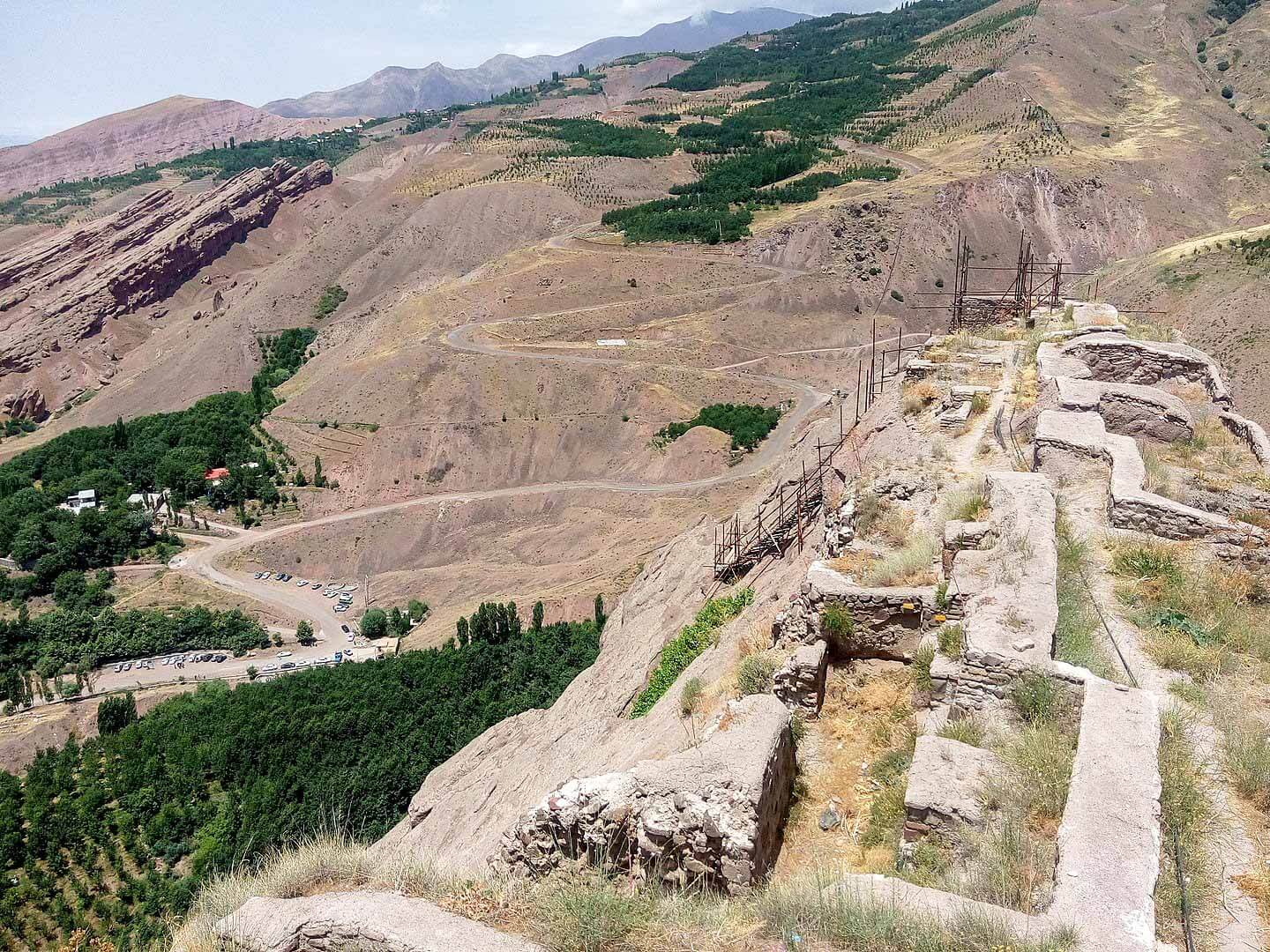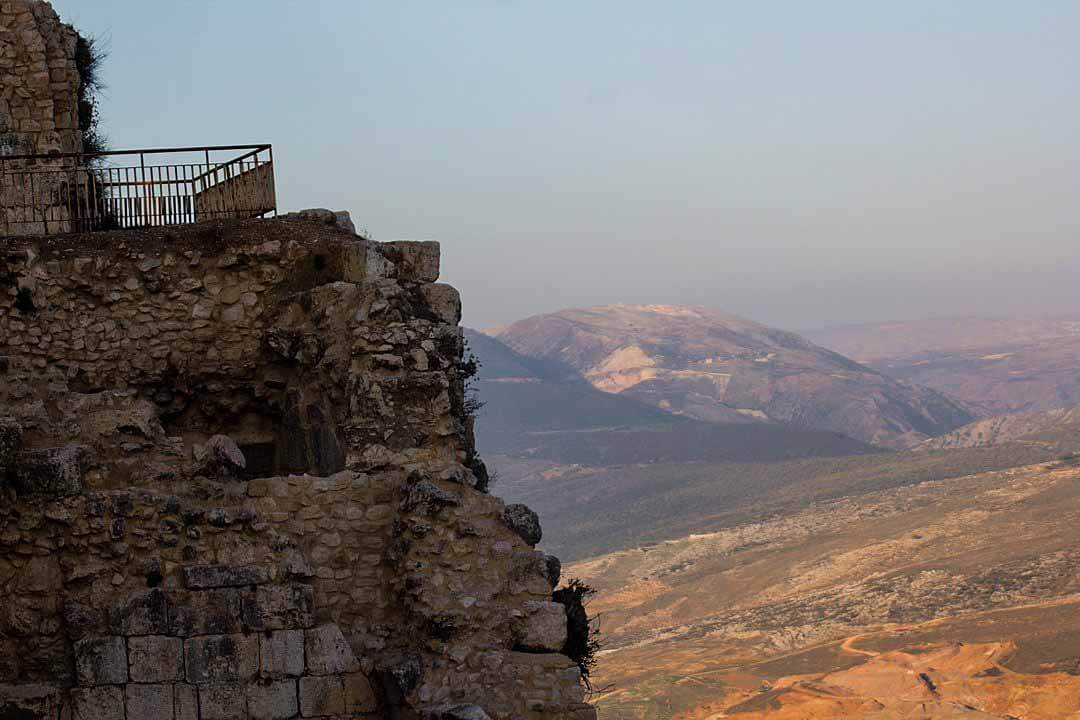Alamut region, Qazvin – Iran
Coordinates: 36.445072, 50.585927
Alamut (Eagle’s nest) is a ruined mountain fortress located in the Alamut region in the South Caspian province of Qazvin near the Masoudabad region in Iran, approximately 200 km (130 mi) from present-day Tehran.
In 1090 AD, the Alamut Castle, a mountain fortress in present-day Iran, came into the possession of Hasan-i Sabbah, a champion of the Nizari Ismaili cause in 1090 AD.
Until 1256, Alamut functioned as the headquarters of the Nizari Ismaili state, which included a series of strategic strongholds, scattered throughout Persia and Syria, with each stronghold being surrounded by swathes of hostile territory.
Alamut, which is the most famous of these strongholds, was thought impregnable to any military attack and was fabled for its heavenly gardens, library, and laboratories where philosophers, scientists, and theologians could debate in intellectual freedom.
The Alamut castle was built by the Justanid ruler of Daylam, Wahsudan ibn Marzuban, a follower of Zaydi Shi’ism, around 865 AD.[4] During a hunting trip, he witnessed a soaring eagle perch down high on a rock. Realizing the tactical advantage of this location, he chose the site for the construction of a fortress
The tales of the fida’is’ training as compiled in Marco Polo’s account, described Alamut Castle as “secret garden of paradise”.
After being drugged, the Ismaili devotees were said be taken to a paradise-like garden filled with attractive young maidens and beautiful plants in which these fida’is would awaken.
Here, they were told by an “old” man that they were witnessing their place in Paradise and that should they wish to return to this garden permanently, they must serve the Nizari cause.
The legends of the Assassins had much to do with the training and instruction of Nizari fida’is, famed for their public missions during which they often gave their lives to eliminate adversaries.
The origins of the word assassin comes from the word hashashin meaning “professional murderer”
Hassan, the founder of Nizari Isma’ilis in Persia, was designated by Marco Polo using a Syrian equivalent term known in Europe at that time, as Old Man of the Mountain.
Polo’s travelogue describes Hassan as a charlatan who devised plots to convert young men to his sect. At the court of the Old Man of the Mountain “they were educated in various languages and customs, courtly etiquette, and trained in martial and other skills”.
At Alamut they had “impressive libraries whose collections included books on various religious traditions, philosophical and scientific texts, and scientific equipment”.
Xishiji, a Chinese manuscript completed in 1263, relates a story similar to that of Polo. The sect leaders “ordered to send assassins to hide in those kingdoms which did not surrender. They stabbed their lords, and women as well, and they died”.
Know This
The Castle itself stands on a very impressive rock from where you have a amazing view. It is well accessible although there are many stairs to climb.






















